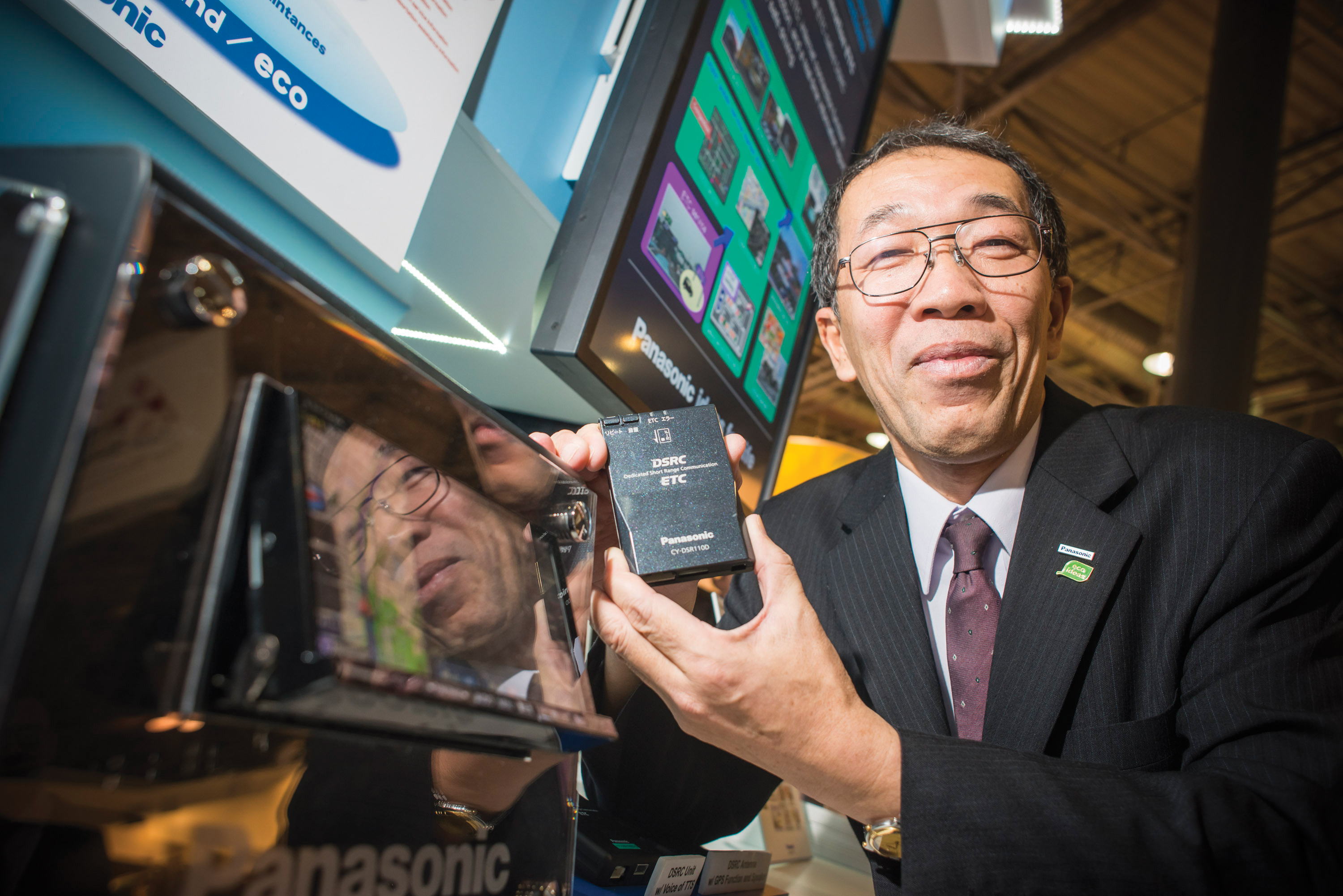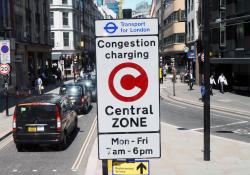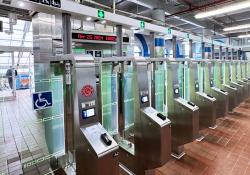
Panasonic's Masahiko Nakamura and his company's vehicle OBU technology
The first generation of DSRC-based OBUs launched to market in Japan back in 2001, where around 40 million are now in use. The technology is especially relevant in Panasonic’s home country, as all motorways are private and congestion is a common problem. Value-added services such as local parking information can also be accessed.
The real-time information services enable drivers to take routing decisions and so help to reduce congestion and carbon emissions. 2011 saw the launch of a second-generation OBU which added further functionalities, such as obstacle warning and real-time images of traffic conditions – as part of an initiative undertaken in concert with the Japanese Government, work has gone on to install a series of cameras and antennas on strategic roads and these feed information into the OBUs. Warnings can include map information, images and advice on which lane to use in order to avoid obstacles such as lost cargo, stopped vehicles or incidents.
The company is also showing its third-generation OBU.
“This is a prototype of a hybrid GPS/DSRC solution,” says Product Design Group Manager, Masahiko Nakamura. “It gives much clearer positional information, which translates into the ability to provide much more localised and relevant information to the individual driver. At the same time, more detailed knowledge of where vehicles are gives traffic managers a more accurate picture of road conditions.
“The new OBU has been under test for a year in Brazil on a fleet of 100 taxis, in preparation for the next Summer Olympics and Soccer World Cup. It’s anticipated that it will hit the market in Japan in 2014, and then be launched in Brazil thereafter in time for the sporting events.”





